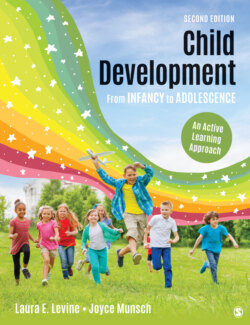Читать книгу Child Development From Infancy to Adolescence - Laura E. Levine - Страница 116
На сайте Литреса книга снята с продажи.
Modern Applications of Piaget’s Theory
ОглавлениеCriticism of Piaget’s theory has focused largely on the methodology he used and his conclusions about when children enter each of the stages in his theory, but his greatest legacy may lie in his concept of constructivism (Newcombe, 2011). Remember that in Chapter 1 we talked about the issue of whether children are passive recipients of environmental influences or actively participate in their own development. Piaget believed that children are active learners, always working to construct their understanding of the world. Many teachers use Piaget’s ideas as the basis for their teaching style (Hinde & Perry, 2007), and research in this area is ongoing. For example, Kamii and Rummelsburg (2008) gave first-grade students math-related activities to explore (such as pick-up sticks and group-based arithmetic games) instead of traditional math assignments (such as, “What is 2 + 2?”). At the end of the year, these students scored higher on tests of mental arithmetic and logical reasoning than did similar students who had received teacher-directed, pencil-and-paper instruction. Active engagement in these activities encouraged the children to think about numbers rather than just repeating what they were told (Kamii, 2014).
Constructivism: The idea that humans actively construct their understanding of the world rather than passively receiving knowledge.
T/F #4
Young children learn math more effectively from games such as pick-up sticks than from working out written arithmetic problems. True
Piaget also emphasized that physical, bodily activities during infancy were the basis for development of thought. This idea has appeared in more recent years as part of the concept of embodied cognition (Kontra, Goldin-Meadow, & Beilock, 2012). In embodied cognition thought and behavior are the outcome of a conversation among multiple “speakers,” including the brain, activity of the body, and environmental stimuli and effects (Marshall, 2016). If you think of a conversation you have had with a group of friends, generally there is not one person who controls the conversation. Instead, each person shapes the topics, direction, and flow of the interaction. In similar fashion, embodied cognition models a complex interaction of many factors that all contribute to the flow and development of human thought and behavior.
Embodied cognition: The concept that cognition is a product of a complex interaction of the brain, bodily activity, and environmental experience.
